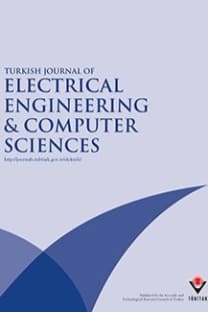Using the finite element method to calculate parameters for a detailed model of transformer winding for partial discharge research
Partial discharge, power transformers, finite element analysis, detailed model
Using the finite element method to calculate parameters for a detailed model of transformer winding for partial discharge research
___
- L.E Lundgaard, “Acoustic partial discharge detection-fundamental considerations,” IEEE Electrical Insulation Magazine, Vol. 8, pp. 25–31, 1992.
- M. Homaei, A. Mazhab Jafari, A. Akbari, “Investigating suitable features for partial discharge localization in power transformer,” International Conference on Condition Monitoring and Diagnosis, Beijing, China, pp. 923–926, 2008.
- L. Yini, Z. Lixing, “A method to locate partial discharge based on the theory of sectional winding transfer functions,” Eighth International Conference on Electronic Measurement and Instruments, Xi’an, China, pp. 2-493–2-498, 2007.
- A. Akbari, P. Werle, H. Borsi, E. Gockenbach, “Transfer function-based partial discharge localization in power transformers: a feasibility study,” IEEE Electrical Insulation Magazine, Vol. 18, pp. 22–33, 2002.
- S.M.H. Hosseini, M. Vakilian, G.B. Gharepetian, “Comparison of transformer detailed models for fast and very fast transient studies,” IEEE Transactions on Power Delivery, Vol. 23, pp. 733–741, 2008.
- G.B. Gharehpetian, H. Mohseni, K. Moller, “Hybrid modeling of inhomogeneous transformer windings for very fast transient overvoltage studies,” IEEE Transactions on Power Delivery, Vol. 13, pp. 157–163, 1998.
- A.M. Jafari, A. Akbari, “Partial discharge localization in transformer windings using multi-conductor transmission line model,” Electric Power Systems Research, Vol. 78, pp. 1028–1037, 2008.
- M. Popov, L. van der Sluis, R.P.P. Smeets, “Complete analysis of very fast transients in layer-type transformer windings,” International Conference on Power Systems Transients (IPST’07), Lyon, France, 2007.
- D. Zhi-Ye, Z. Chun, R. Jiang-Jun, Y. Shi-Feng, Y. Wen-Bing, “Calculation of distribution parameters for research on propagation characteristic of PD in transformer winding,” Power and Engineering Conference, Asia-Pacific, 2009, pp. 1–5.
- N. Bianchi, Electrical Machine Analysis Using Finite Elements, London, UK, Taylor & Francis, 2005.
- V. M. Eslamian, B. Vahidi, S.H. Hosseinian, “Analytical calculation of detailed model parameters of cast resin dry-type transformers,” Energy Conversion and Management, Vol. 52, pp. 2565–2574, 2011.
- ISSN: 1300-0632
- Yayın Aralığı: Yılda 6 Sayı
- Yayıncı: TÜBİTAK
Cebrail ÇİFLİKLİ, Ahmet Turgut TUNCER, Yusuf ÖZTÜRK
Predictive control of a constrained pressure and level system
ERKAN KAPLANOĞLU, TANER ARSAN, HÜSEYİN SELÇUK VAROL
Estimating facial angles using Radon transform
Mohamad Amin BAKHSHALI, Mousa SHAMSI
Levent CİVCİK, Burak YILMAZ, Yüksel ÖZBAY, Ganime Dilek EMLİK
A new hysteresis band current control technique for a shunt active filter
Novel congestion control algorithms for a class of delayed networks
Shoorangiz Shams Shamsabad FARAHANI, Mohammad Reza Jahed MOTLAGH, Mohammad Ali NEKOUI
